The Menstrual Cycle
Scientific American
Artwork for Scientific American.
The piece visually represents the menstrual cycle, showing the variables involved and their connections.
The visualization shows – as different layers of information – data on the hormones that stimulate the ovaries, the ovulatory cycle, the hormones released by the ovaries, the relative thickness of the uterine endometrial lining and the blood vessels and glands.
«Humans are among the very few species to experience a period. The menstrual cycle starts in the brain, which sends signals to the pituitary gland to produce hormones that stimulate the ovaries. The ovaries house egg-containing follicles that release an egg during ovulation. The ovaries also secrete hormones to help prepare the uterus to host an embryo, which results if the egg is fertilized by a sperm. If no embryo implants, the uterus disposes of its lining, and the cycle begins again.» Scientific American
Editor: Jennifer Christiansen
Data Visualizations designed by Federica Fragapane
Article by Virginia Sole-Smith
A project by Federica Fragapane
Instagram: instagram.com/federicafragapane
Twitter: twitter.com/fedfragapane
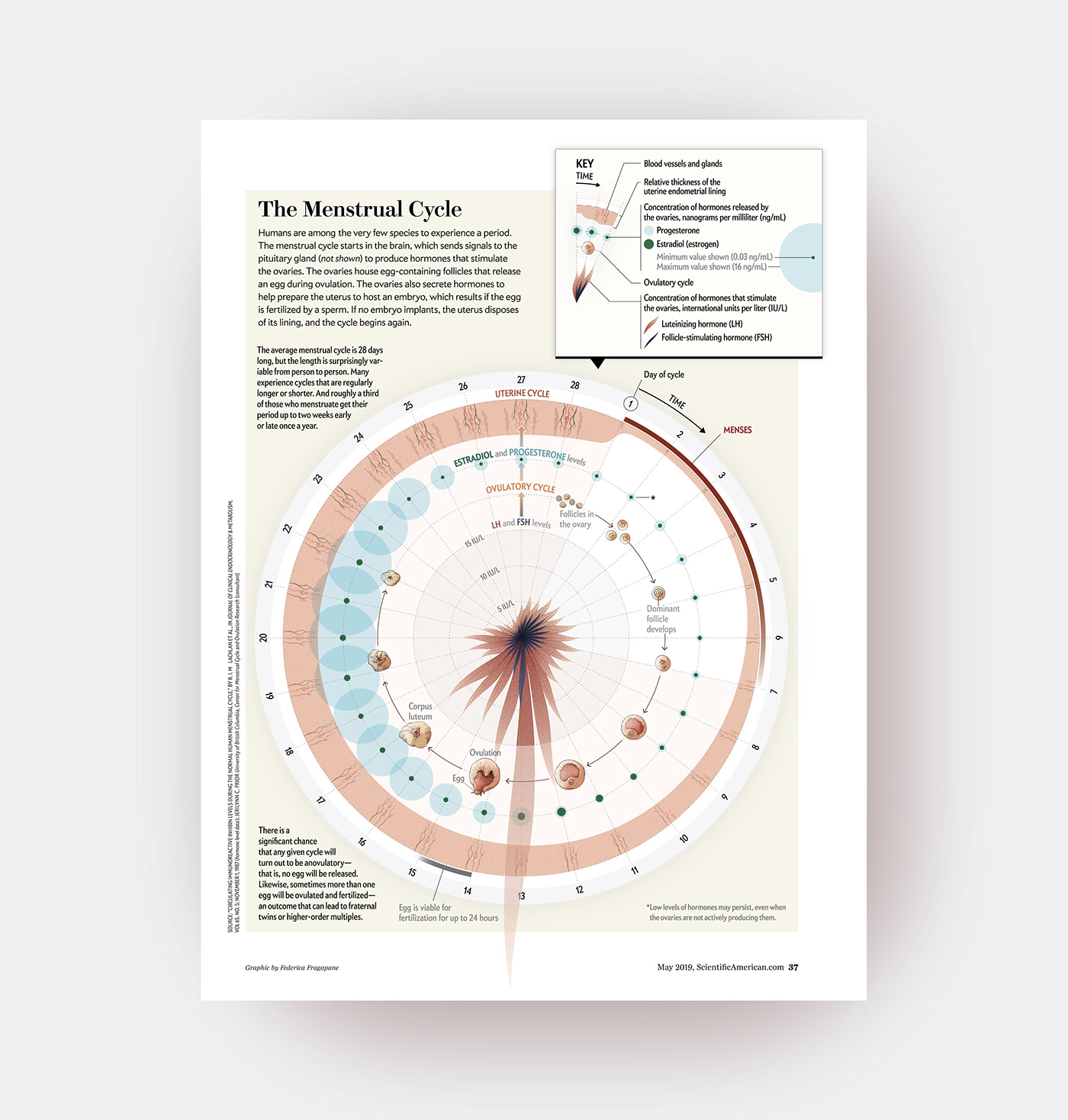
Key

Layers of information
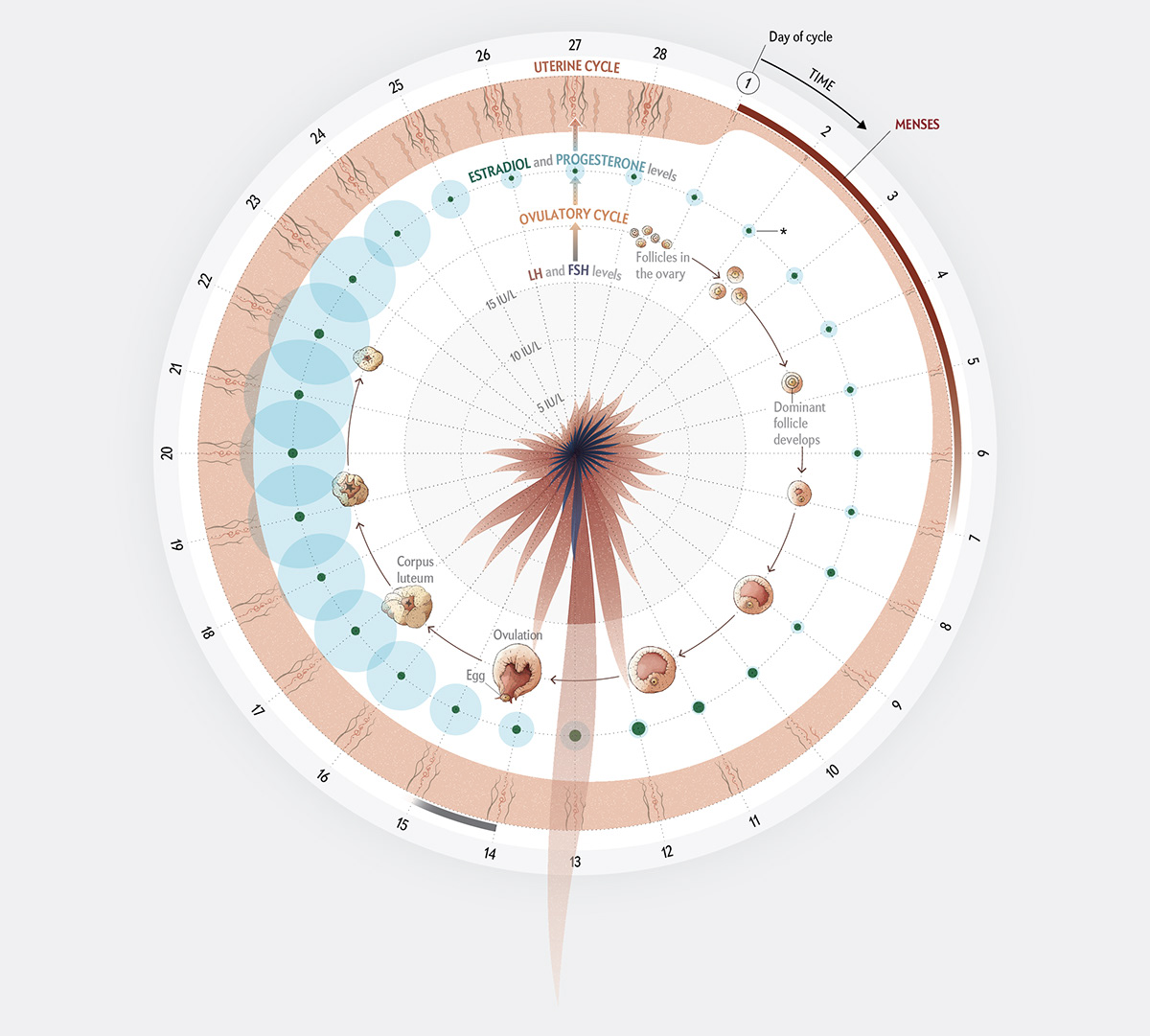
Illustrations
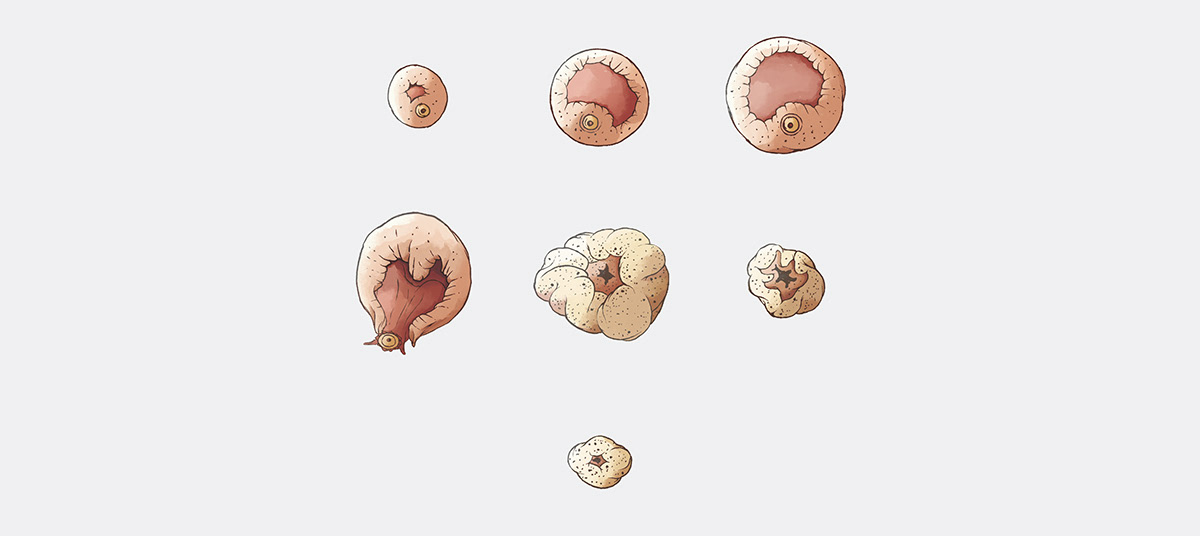
The visualization
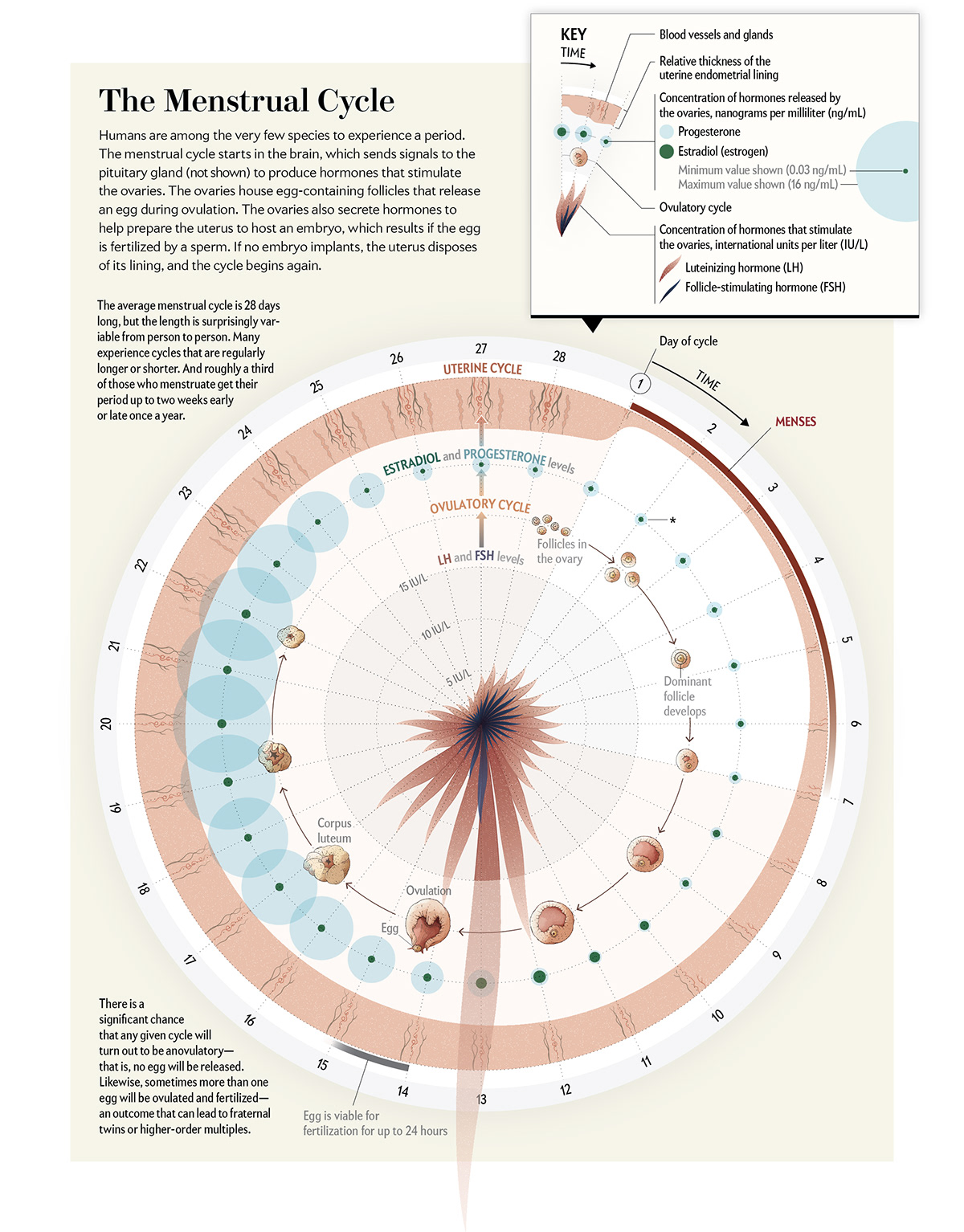
SOURCE: “CIRCULATING IMMUNOREACTIVE INHIBIN LEVELS DURING THE NORMAL HUMAN MENSTRUAL CYCLE,” BY R. I. M c LACHLAN ET AL., IN JOURNAL OF CLINICAL ENDOCRINOLOGY & METABOLISM, VOL 65, NO. 5; NOVEMBER 1, 1987 (hormone level data); JERILYNN C. PRIOR University of British Columbia, Center for Menstrual Cycle and Ovulation Research

Photo by Almichael Fraay
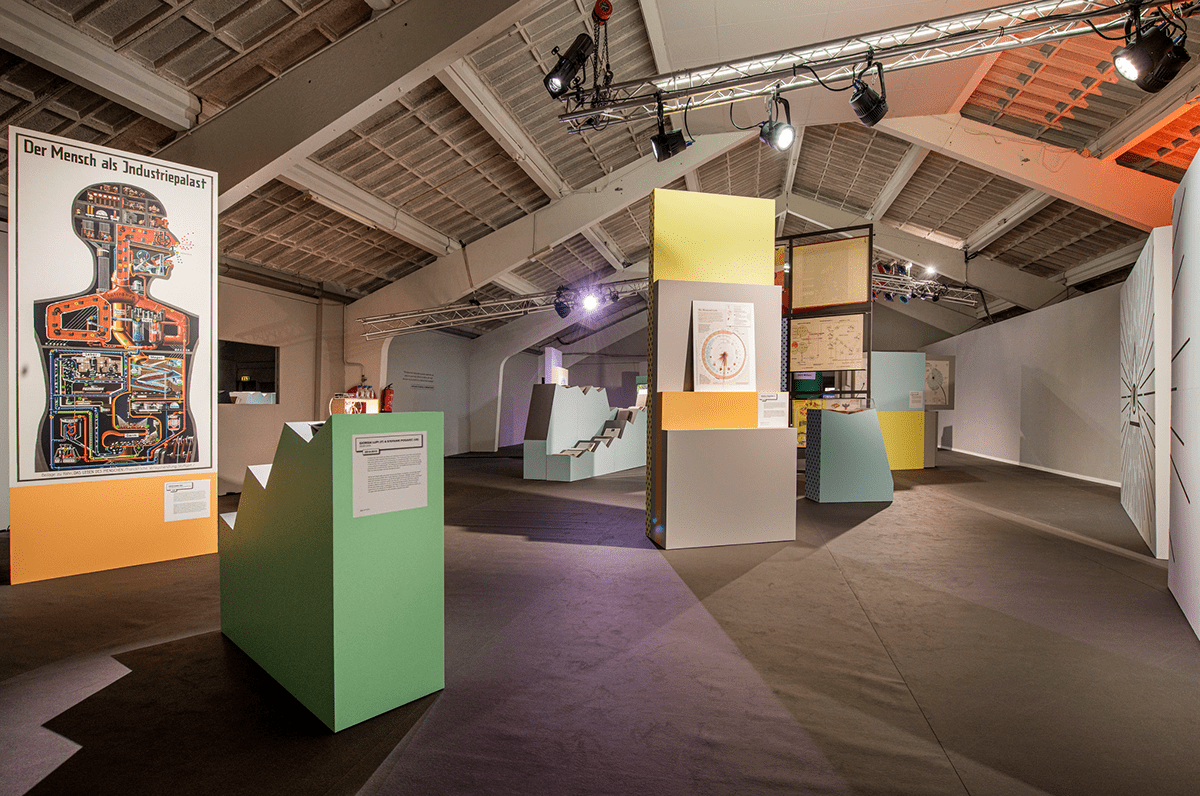
Photo by Edwin Wiekens
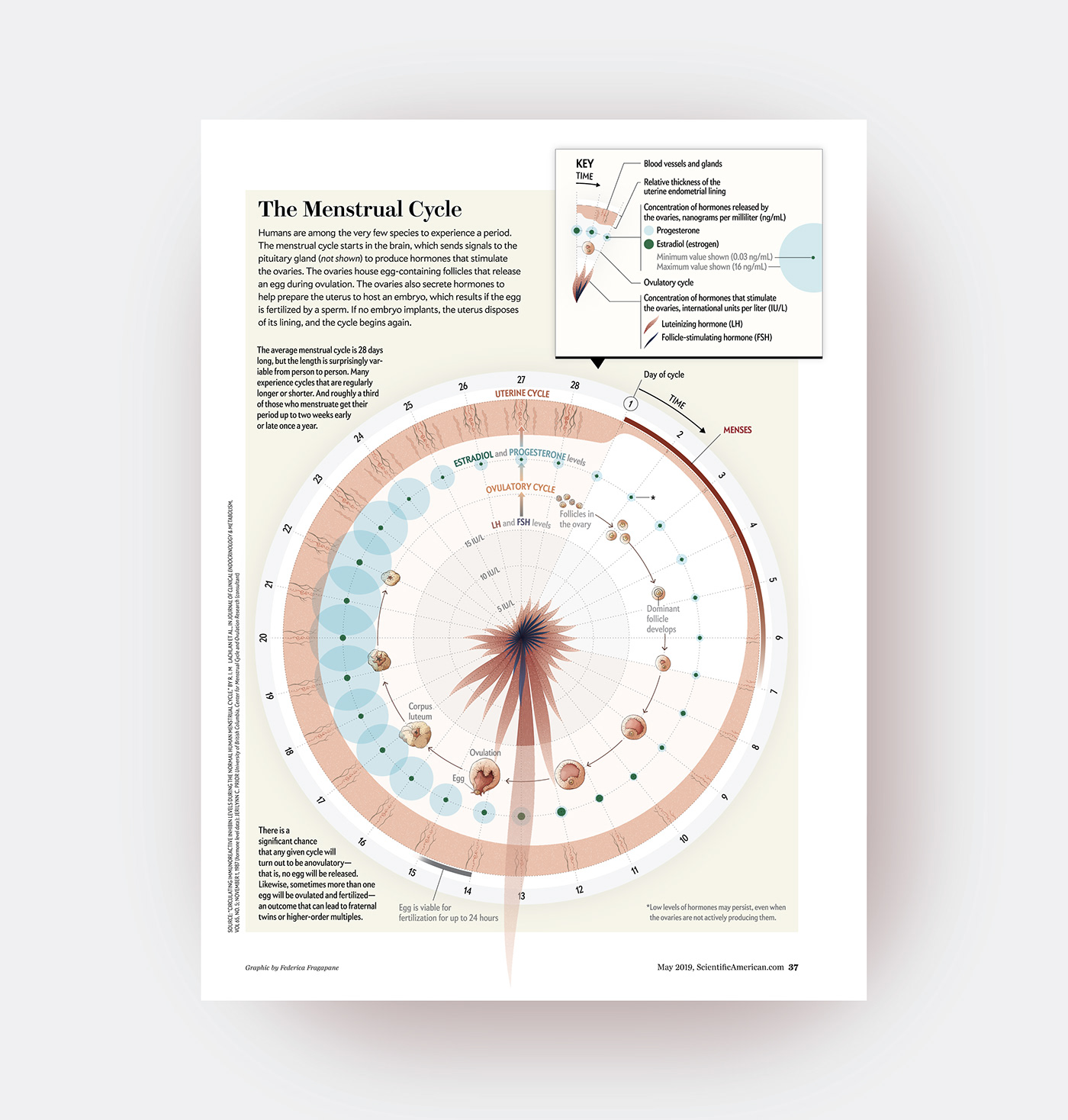
A project by Federica Fragapane
Instagram: instagram.com/federicafragapane
Twitter: twitter.com/fedfragapane




